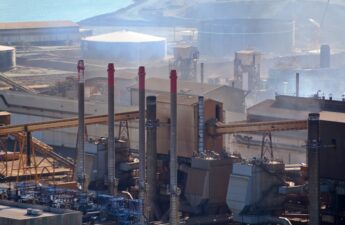By: Omar Khattaly
Researcher & Consultant on MENA Political Economy and Sovereign Wealth Funds
Norway’s Sovereign Wealth Fund (SWF), Government Pension Fund Global (GPF-Global) started in 1990 as a future generation financial cushion and as the population’s pension fund. A fund that receives its financing from the country’s oil revenue and not from pension contributions. The fund did not receive any government financial contribution until 1996 where the fund began its amazing investment journey in the international financial world. As of today, the fund has over $1 trillion in assets under management and controls over 1.3% of stocks owned in the world. By 2030, the fund forecasted to be worth $3.3 trillion.
Currently, Norway’s GDP stands at $370 billion and a per capita GDP at $71,000. Third in the world after Luxemburg at $105,000 and Switzerland at $79,000. 2017 unemployment at 4.7%.

How did a small country with a population of only 5.3 million manage to build a strong and stable economy with large savings where many other large oil-producing countries failed? I think the answer is financial discipline.
This article will not cover Norway’s economic success but will look at some of the Fund’s characteristics such as transparency and its ethical practices that made it a model to follow and respect in the world of SWF.
Norway Ministry of Finance is the owner of the GPF-Global. The Norges Bank (Norway Central Bank) manages the fund through a management agreement with the consultation and approvals of Norway’s Parliament the (Storting).
The Ministry of Finance sets the portfolio Benchmark for the Norges Bank to follow. It puts together the strategy, investment allocation including geographical locations and divestment guidelines. The Ministry does this independently away from any influence from the operational manager of the fund the Norges Bank.
Since the beginning, the fund has focused on two goals; profitability and socially responsible investments. In 2008, Norway Finance Minister announced that their investment decisions are not influenced by politics and that the fund is a financial investor and not a strategic investor.
GPF-Global uses strict ethical guidelines in its investment and divestments decisions. In fact, the fund is one of very few SWF in the world to adopt such strong measures. The fund is managed with a high degree of transparency and information disclosure. From early on, the fund was one of the participants in the IMF sponsored International Working Group and with the Santiago Principals that promote transparency, accountability, and good governance.
In 2004, and by a royal decree, Norges Bank, the operational manager of the fund set up the Council on ethics to make sure the fund complies with its strict ethical guidelines. The council is made up of experts and highly educated professionals in areas such as Law, economics, human rights and environmental sciences. The council reviews investments and issues reports to the Finance Ministry for action.
Since formation and, as part of the fund’s ethical guidelines, the council have made recommendations to blacklist and exclude over 50 companies from its portfolio. They have excluded companies from the USA, Israel, Canada, and Russia for being involved in the production of weapons. The fund has made it clear that they will not invest in any companies that produce weapons and sell them in active areas of conflict, companies that are involved in human rights violations, corruption, child labor or severe environmental damages. Tobacco companies were in the ban as well.
On transparency, the fund is acknowledged with high regard in its group. In 2007, the GPF-Global called on corporations to be more transparent on tax payments in effort to combat tax havens. It is worth mentioning here that the fund has stakes in more than 9000 companies globally.
The fund is required by the Ministry of Finance and the Storting to issue quarterly and annual reports to the Minister of Finance on market review, and market value. Also reports on socially responsible investments and governance including environmental protection. The Norges Bank publishes these reports on its website for the public to view.
As part of their continuing efforts on transparency, the fund also publishes quarterly reports with a summary of Norges Bank activities regarding all communications with companies as well as voting on general meetings and board meetings especially on issues relating to the environment and human and labor rights.
In my opinion, many newly formed funds, and funds in parts of the world with weak democratic institutions can use the GPF-Global as a model for growth and strengthening internal structures and governance





The theme of the article is very interesting. I was glade to be informed about it. Because nowadays everything gets expensive and knowing getting down prices of one of the main wealth of the world is calms!